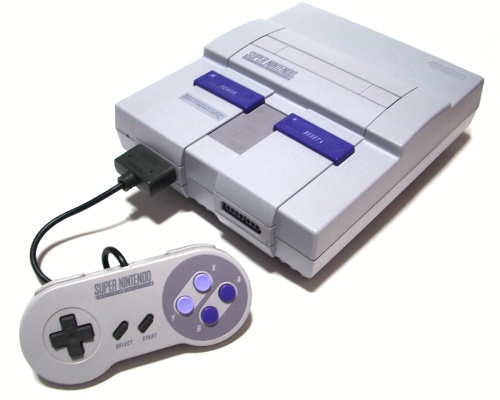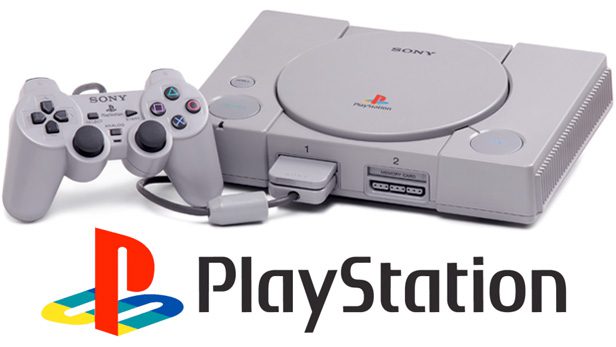It’s amazing how time flies. A whopping twenty-five years have passed since the Super Nintendo Entertainment System succeeded after Nintendo’s original 8-Bit console. The SNES was around to compete with SEGA’s market-hungry gaming machine, the SEGA Genesis (or Mega Drive, depending on where you live). It may not look as cool or slick as the Genesis hardware but the SNES is nevertheless an iconic console that would define video gaming in the 1990’s. It would also introduce some innovations that consoles today owe it big time.
 While Atari attempted to make successors to its own consoles the decade prior, the fact that there was a new Nintendo console coming to carry the torch the NES lit was a huge deal. Nintendo accepted SEGA’s unspoken challenge and they unleashed a beast of a system! Now we’re playing with power! Super power! Nintendo followed through to make sure the Super NES left a lasting impression on the community. The very first games that arrived for the system made sure to take full advantage of the SNES’s capabilities.
While Atari attempted to make successors to its own consoles the decade prior, the fact that there was a new Nintendo console coming to carry the torch the NES lit was a huge deal. Nintendo accepted SEGA’s unspoken challenge and they unleashed a beast of a system! Now we’re playing with power! Super power! Nintendo followed through to make sure the Super NES left a lasting impression on the community. The very first games that arrived for the system made sure to take full advantage of the SNES’s capabilities.

The launch titles demonstrated an extraordinary color palette, seamless uses of psuedo-3D technology, and played like a dream in more ways than the NES ever could hope to achieve! Whenever SEGA thought they had Nintendo beat, the latter would always enforce some big game that proved them wrong. As SEGA would try enhancing the Genesis with add-ons like the ill-fated SEGA CD and 32x, Nintendo (for the most part) stuck to their guns and taught gamers that the SNES was able to improve itself without extra consoles attached to it.

Star Fox, for example, showed that with the help of nothing more than a special chip in the game cartridge, the SNES could envision real 3D polygons. Nowadays, it is more of a novelty than a playable experience. Still it’s mind-blowing to see how the Super NES’s specs can be utilized in such a way. Donkey Kong Country pushed the ante even further by producing CGI-rendered graphics without even needing anything like Star Fox‘s Super FX chip!

Admittedly there was one point in time where Nintendo was looking forward to having a CD add-on created. Sony, who had no prior knowledge of making video games, were brought onboard to help develop the technology for the add-on. They called it the Nintendo Playstation. However, Nintendo made the wrong move and tried to have a contract with Phillips while Sony wasn’t looking. The result was the hideous group of Phillips CD-i games starring Mario and Zelda characters.

More importantly, the Playstation wouldn’t exist without this decision! Sony eventually decided to use the tech by themselves and release it’s own console. Not only did Nintendo shown how much of a powerhouse the SNES was, the company also created its own worst competitive nightmare. Everything Sony’s ever achieved in the gaming industry can be traced back to this very slip-up.

In fact, just about every console after the Super Nintendo can be traced back to its design. The controller is the most notable aspect of this. The iconic four face-button layout would be copied by up-and-coming gaming consoles for ages to come. Shoulder buttons make their debut with the SNES controller as well. What other consoles can’t mimic however is the glorious D-Pad. They have tried, but failed to replicate its usability (Although that’s more likely because Nintendo patented it).

On a lesser extent, the Super Nintendo popularized backwards compatibility. It’s not the first console to attempt such a thing as the Colecovision’s Expansion Module existed for Atari 2600 games to be played on the former. Another entry to the backwards compatibility hardware game is Sega. SEGA provided their first Genesis model with an adapter for Master System games to be playable. A twist on the BC game that Nintendo would achieve is the add-on that would allow you to play Game Boy games on the TV. That is freaking boss. Dubbed the Super Game Boy, this automatically opened up a whole new Nintendo game library for gamers to enjoy at the comfort of their couch (or if they hadn’t owned a Game Boy unit at all). Preceding consoles simply didn’t have game libraries of this combined magnitude. It gets all the sweeter when certain Game Boy games would feature special effects for the Super Game Boy to recognize; some games would have a special border surrounding the game screen or have 16-bit music on certain occasions, for example.

With all that’s said and done, no console generation could last forever. The Super Nintendo eventually had to step down from store shelves to make way for the Nintendo 64 as game companies followed the success of the Playstation. However, the SNES will forever be remembered fondly for generations to come. Its library of games is arguably unmatched to this day. The grand majority of Super Nintendo games gave it their all to provide the best experience possible. All while the console itself delivered innovations that succeeding systems would continuously embrace as time went on.
Happy Birthday, Super Nintendo. You are my first, and favorite, console of all time.



